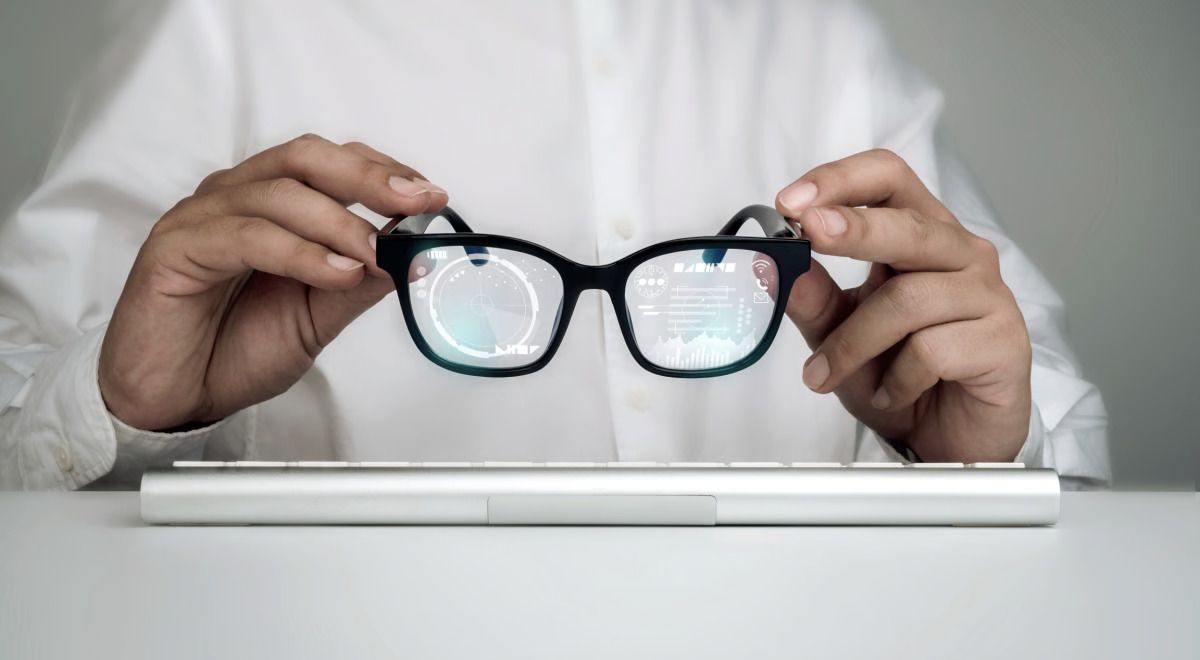Wearable Wellness: Exploring Health Monitoring Through Smart Eyewear

Read time: 4 minutes
As technology advances, the integration of digital innovations with everyday accessories is becoming more prevalent and impressive, particularly in the world of eyewear. Smart eyewear represents a significant leap forward in the domain of wearable wellness, combining the practicality of glasses with the advanced functionality of health monitoring devices. This merging of technology offers a discreet and convenient way to keep track of personal health metrics without compromising style or comfort.
Join us as we uncover the features, benefits, and potential of smart eyewear from the perspective of the eyecare experts at the leading San Diego optometry shop. Whether for managing specific health conditions or enhancing overall wellness, the emerging potential of smart eyewear promises a future where technology and health become increasingly interconnected.
Understanding Smart Eyewear Technology
Smart eyewear incorporates cutting-edge technology into the familiar form of eyeglasses or sunglasses. These innovative devices are equipped with sensors, Bluetooth connectivity, and even small digital displays. By integrating health-monitoring probes that measure vital signs such as heart rate, body temperature, and even blood oxygen levels, these glasses offer a glimpse into the future of personal health management.
The technology operates seamlessly within the frame, ensuring users can monitor their health metrics without needing to wear additional devices. This integration is not only practical but also adds a layer of privacy and convenience, making it ideal for continuous health monitoring.
Health Metrics Tracked by Smart Eyewear
Smart eyewear can monitor a variety of health metrics that are essential for maintaining an overview of one's well-being. Heart rate sensors embedded in the temple or side of the frames ensure real-time heart monitoring, alerting wearers to any abnormalities or changes in their heart function. Some models are even capable of tracking brain wave activity, eye movement, and skin conductivity, providing insights into stress levels and mental well-being.
Moreover, smart glasses can enhance the management of specific health conditions. For instance, for those managing diabetes, certain smart eyewear can keep tabs on glucose levels by analyzing tears instead of blood, offering a non-invasive way to monitor blood sugar levels continuously. This feature could significantly impact how individuals with diabetes manage their condition, offering a less intrusive, more integrated way to keep track of their health.
Impact of Smart Eyewear on Lifestyle
The convenience and functionality of smart eyewear allow users to make informed decisions about their health and lifestyle. For fitness enthusiasts, these glasses offer a combination of a personal trainer and a health monitor. They can provide feedback on performance while jogging, cycling, or engaging in other sports activities. This feedback could include information about calorie burn, distance covered, and posture alignment, tailored in real-time.
For individuals focused on mental well-being, smart eyewear can help manage stress through biofeedback techniques. By analyzing physiological data such as heart rate variability and brain activity, these devices can guide users through stress-reducing exercises like controlled breathing or meditation, directly from their eyeglasses.
Enhancing Medical Communication and Care
One of the more revolutionary aspects of smart eyewear is its potential to transform patient care through improved communication with healthcare providers. By sharing accurate, real-time health data collected through smart glasses, doctors can receive a more comprehensive overview of their patient's health, often getting details that may not be as apparent during traditional office visits.
In emergency situations, smart eyewear can directly alert healthcare providers if critical changes in health markers occur, potentially saving lives by expediting medical responses. For elderly users or those with chronic conditions, this feature provides significant peace of mind, knowing that help is just a moment away should they need it.
The Future of Smart Eyewear in Everyday Life
As this technology continues to evolve, the potential applications of smart eyewear in daily life seem limitless. Looking ahead, advancements in augmented reality (AR) could merge with health-monitoring capabilities to provide even more dynamic user experiences. For example, AR can assist with navigation, translate languages in real-time, or provide visual prompts for health-related actions, all within the user's line of sight.
Advances in battery technology and miniaturization will also enhance the future functionality and wearability of smart eyewear. As these devices become more lightweight and stylish, with longer-lasting power sources, adoption is likely to increase, making smart eyewear a standard accessory in personal wellness and health management.
The integration of technology with traditional eyewear opens up a world of possibilities for monitoring and improving health while maintaining an emphasis on convenience, style, and accessibility. As we continue to witness and participate in the evolution of wearable technology, smart eyewear stands out as a promising tool in the pursuit of enhanced personal health and well-being, proving to be an indispensable innovation in our daily lives.
Embrace the Future of Health with Smart Eyewear
As we step into the future, where technology blends seamlessly with everyday life, smart eyewear stands as a testament to innovation in health monitoring and lifestyle enhancement. The remarkable capabilities of smart eyewear and its transformative impact on health and wellness are set to revolutionize the eyewear market.
At Urban Optiks Optometry,
San Diego's leading optometry shop, we are at the forefront of the technological revolution and are carefully monitoring the advancements in smart eyewear design to keep you connected, in style, and in tune with your health.
Share this blog post on social or with a friend:
The information provided in this article is intended for general knowledge and educational purposes only and should not be construed as medical advice. It is strongly recommended to consult with an eye care professional for personalized recommendations and guidance regarding your individual needs and eye health concerns.
All of Urban Optiks Optometry's blog posts and articles contain information carefully curated from openly sourced materials available in the public domain. We strive to ensure the accuracy and relevance of the information provided. For a comprehensive understanding of our practices and to read our full disclosure statement, please click here.


















